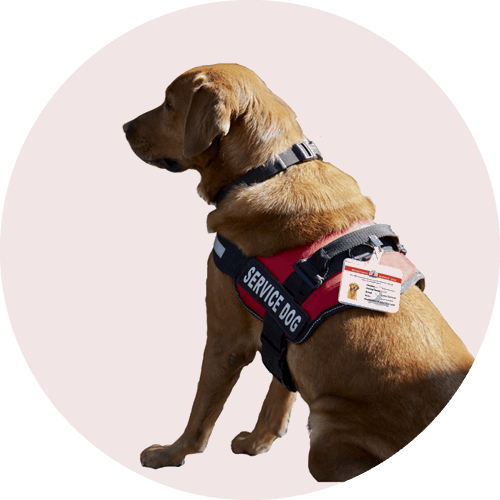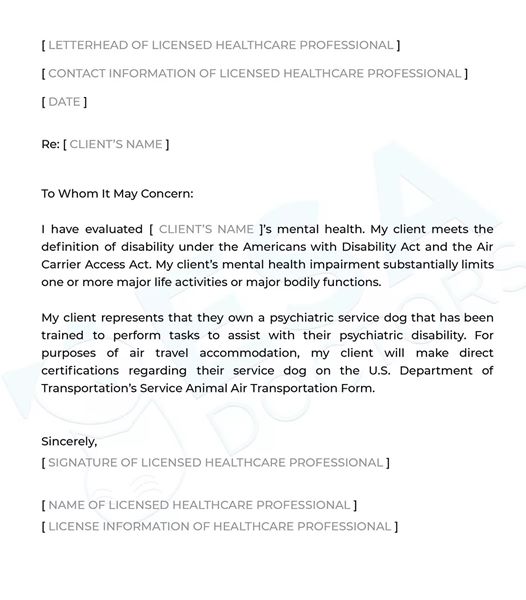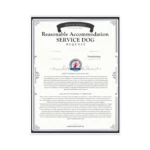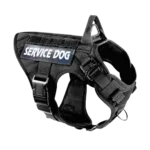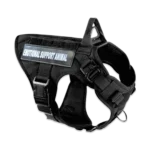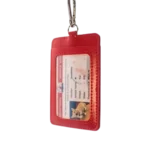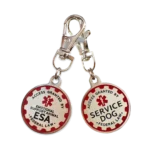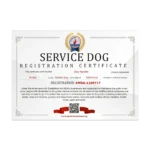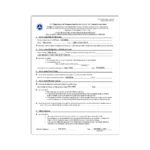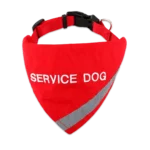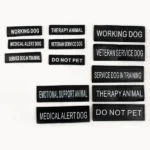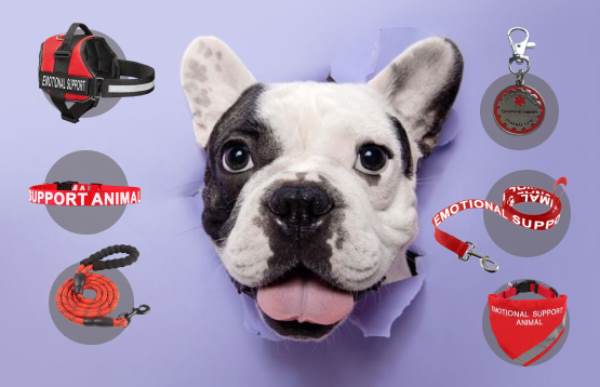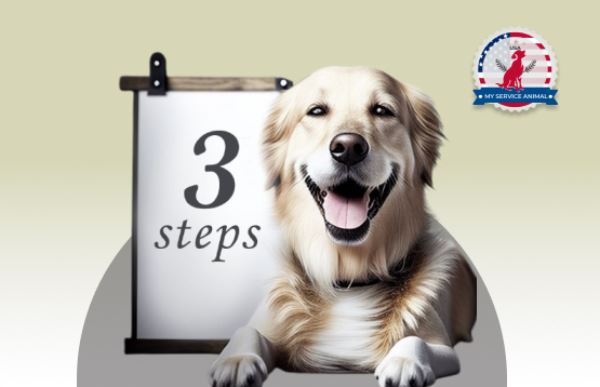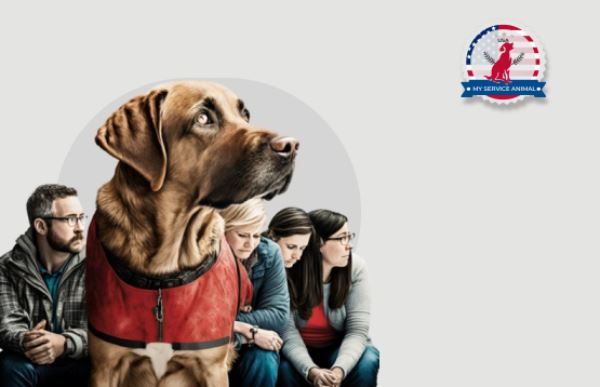A service dog doctor’s letter, also known as a service dog medical letter or service dog prescription, is a document issued by a licensed medical professional that confirms an individual’s need for a service dog. This letter is based on a comprehensive evaluation of the individual’s medical condition and their ability to benefit from the assistance of a service dog.
Understanding Assistance Animals in 2025
Service animals are specially trained animals that assist individuals with disabilities in performing daily tasks and living more independently. Modern service animal training has evolved significantly, with programs now starting as early as eight weeks old. Training focuses initially on socialization and foundational obedience, then progresses to specialized task work tailored to the handler’s specific needs. Each service animal receives individualized training to maximize their effectiveness for their particular handler.
It is essential to understand the distinction between service dogs, ESAs, and therapy animals. An emotional support animal (ESA) is a companion animal that provides therapeutic benefits through companionship and emotional support. Emotional support animals help individuals with mental health conditions by alleviating symptoms and providing comfort. Unlike service dogs, emotional support animals do not require specialized task training.
According to the Americans with Disabilities Act (ADA):
Under the Americans with Disabilities Act (ADA), service animals are defined as dogs that are individually trained to do work or perform tasks for people with disabilities. Dogs whose sole function is to provide comfort or emotional support do not qualify as service animals under the ADA.
Therapy animals provide comfort and support to multiple people in settings such as hospitals, nursing homes, schools, libraries, and disaster relief sites. These animals must be well-trained and sociable, but unlike service dogs, they are not dedicated to a single handler and do not have public access rights under the ADA.
Service dogs represent the most protected category of assistance animals under federal law. They perform specific, trained tasks related to their handler’s disability, whether physical, sensory, psychiatric, intellectual, or mental. These tasks go beyond companionship to include work such as guiding individuals with visual impairments, alerting to sounds, retrieving items, detecting medical episodes, interrupting harmful behaviors, and providing mobility support.
Service dogs often become protective companions for their handlers, who may be vulnerable in public settings. Modern training emphasizes both task performance and public access manners, ensuring these animals can safely accompany their handlers throughout daily life.
Types of Service Animals and Their Specialized Roles
- Guide dogs: Assist individuals with visual impairments by navigating obstacles, stopping at curbs and stairs, and safely guiding their handlers through various environments.
- Hearing dogs: Alert deaf or hard-of-hearing individuals to important sounds such as doorbells, alarms, crying babies, approaching vehicles, and their name being called.
- Mobility assistance dogs: Support individuals with mobility impairments by helping with balance, pulling wheelchairs, retrieving dropped items, opening doors, and pressing buttons.
- Medical alert dogs: Detect changes in blood sugar levels, impending seizures, cardiac episodes, or other medical conditions, alerting handlers before symptoms become severe.
- Psychiatric service dogs: Assist individuals with mental health conditions such as PTSD, severe anxiety, depression, and panic disorders by performing tasks like deep pressure therapy, interrupting harmful behaviors, creating personal space in crowds, and reminding handlers to take medication.
- Autism assistance dogs: Help individuals on the autism spectrum with sensory regulation, preventing elopement, providing calming pressure during meltdowns, and facilitating social interactions.
- Seizure response dogs: Trained to respond during or after seizures by activating alert systems, positioning the handler safely, retrieving medication, or providing stability as the person recovers.
- Allergy detection dogs: Identify the presence of specific allergens such as peanuts, gluten, or other substances that could trigger severe allergic reactions in their handlers.
- Diabetic alert dogs: Specifically trained to detect blood sugar fluctuations and alert their handlers before dangerous hypoglycemic or hyperglycemic episodes occur.
These service animals significantly enhance the independence, safety, and quality of life for individuals with disabilities, enabling them to participate more fully in work, education, and community activities.

Suitable Breeds and Animal Selection in 2025
The Americans with Disabilities Act specifies that only dogs (and in some cases, miniature horses) can qualify as service animals. Dogs are preferred due to their trainability, social nature, and ability to bond closely with handlers. The ADA does not restrict or recommend specific breeds, allowing handlers to choose based on their individual needs and preferences.
When selecting a service dog, consider temperament over breed stereotypes. The ideal service dog candidate should be intelligent, calm, non-aggressive, eager to please, and comfortable in various environments. Health testing and genetic screening have become standard practice in 2025, helping to ensure service dog candidates are physically and mentally sound.
Popular service dog breeds include Labrador Retrievers, Golden Retrievers, German Shepherds, Standard Poodles, Border Collies, and Bernese Mountain Dogs. These breeds are known for their trainability, work ethic, and stable temperaments. However, smaller breeds such as Poodles, Papillons, Cocker Spaniels, and Terriers can also excel as service dogs, particularly for tasks that don’t require physical strength.
Many individuals successfully owner-train their existing dogs or adopt dogs from shelters and rescues. Professional service dog trainers can evaluate your current dog’s suitability and help develop a training plan. In 2025, virtual training options and online certification programs have expanded access to professional guidance, though in-person training remains the gold standard.
How to Obtain a Doctor’s Letter for a Service Dog
Obtaining a doctor’s letter for a service dog is an important step in documenting your need for a service animal. While the ADA does not require service dog handlers to carry documentation in most situations, a doctor’s letter can be valuable for housing accommodations, employment situations, and clarifying your rights when challenged.
What is a Service Dog Letter?
A service dog letter is a document from a licensed healthcare professional that confirms you have a disability as defined by the ADA and explains how a service dog assists with that disability. This letter is particularly important when your disability is not readily apparent.
A comprehensive service dog letter typically includes:
- Confirmation of Disability: A statement verifying that you have a qualifying disability under the ADA or relevant disability law. The letter may briefly describe your condition and how it substantially limits one or more major life activities.
- Recommendation for a Service Dog: A clear recommendation that a service dog is part of your treatment or management plan. The letter should explain how the service dog mitigates limitations caused by your disability.
- Description of Tasks: Specific tasks or work the service dog is trained to perform that directly relate to your disability. These tasks should address functional limitations and support your independence and safety.
- Professional Credentials: The letter must be signed by a qualified healthcare provider such as a physician, psychiatrist, psychologist, licensed clinical social worker, or other licensed mental health professional. It should include their contact information, license number, and professional title.
- Date of Issuance: The letter should be current, typically issued within the past year. Some entities may require more recent documentation, so check specific requirements for your situation.
Note that the specific requirements for a service dog letter may vary depending on the requesting entity and your jurisdiction. For housing accommodations under the Fair Housing Act, for example, you may need documentation specifically for a “reasonable accommodation” request.
Who Can Issue a Service Dog Letter?
- Primary Care Physician: Your primary care doctor knows your medical history and can evaluate whether a service dog would benefit your condition. They can issue a letter if they are treating the disability for which you need the service dog.
- Medical Specialists: Specialists such as neurologists, cardiologists, endocrinologists, or orthopedic doctors can provide letters for conditions within their area of expertise.
- Mental Health Professionals: Psychiatrists, psychologists, licensed clinical social workers (LCSW), licensed professional counselors (LPC), and licensed marriage and family therapists (LMFT) can issue letters for psychiatric service dogs.
- Disability and Rehabilitation Specialists: Professionals who work specifically with individuals with disabilities, including occupational therapists and rehabilitation counselors, may provide supporting documentation.
- Telehealth Providers: In 2025, telehealth has become widely accepted for service dog evaluations. Many licensed providers offer virtual consultations specifically for service dog letters, ensuring accessibility for individuals in rural areas or with mobility limitations.
The healthcare provider issuing your letter must have an established professional relationship with you and be familiar with your disability and how it affects your daily life. Letters from providers who have never examined you or have only conducted a brief online questionnaire may not be accepted by landlords, employers, or other entities.
Obtaining a Service Dog Letter: Cost and Accessibility
While some providers charge for service dog letters, there are ways to obtain documentation affordably or at no cost:
Free or Low-Cost Options:
- Your Existing Healthcare Provider: If you already have a doctor or mental health professional treating your disability, they may provide a letter as part of your ongoing care, often at no additional cost.
- Community Mental Health Centers: Federally qualified health centers and community mental health organizations often provide services on a sliding scale based on income.
- Non-Profit Organizations: Disability advocacy organizations and service dog non-profits may offer assistance with documentation or connect you with providers who offer reduced fees.
- University Training Clinics: Psychology and counseling programs at universities often provide low-cost evaluations through their training clinics, supervised by licensed professionals.
- Insurance Coverage: Many health insurance plans cover evaluations and documentation when medically necessary. Contact your insurance provider to verify coverage and any copay requirements.
When obtaining a service dog letter, ensure the healthcare professional is appropriately licensed and knowledgeable about service dog law and your specific condition. The letter should be professional, clear, and include all necessary elements to be accepted where documentation is legally required.
Proving Service Dog Status in Public
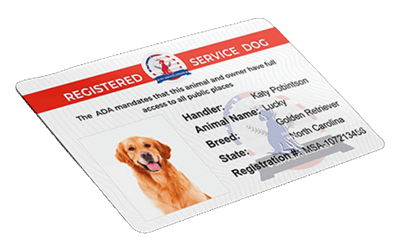
Under the ADA, service dog handlers are not required to provide documentation in most public situations. Businesses and public accommodations may only ask two questions:
- Is the dog a service animal required because of a disability?
- What work or task has the dog been trained to perform?
They cannot ask about your specific disability, require documentation, demand demonstration of tasks, or ask for identification cards.
However, many handlers choose to use service dog identification accessories such as vests, patches, or ID cards to reduce questioning and help the public recognize their service animal. While not required, these items can facilitate smoother access and reduce unwanted interactions or distractions.
Service dogs are identifiable by their behavior: They remain calm in public, stay close to their handler, respond to commands, and do not seek attention from others. A well-trained service dog is focused on their handler and their work, not on the environment or other people.
Situations where documentation may be required:
- Housing: Under the Fair Housing Act, landlords may request documentation of disability and disability-related need for the animal as a reasonable accommodation.
- Air Travel: Airlines require advance notification and specific documentation for psychiatric service dogs under current Department of Transportation regulations.
- College or University: Educational institutions may require documentation to approve a service dog in campus housing or classrooms.
- Employment: Employers may request documentation when evaluating a reasonable accommodation request under the ADA.
Remember that you have the right to privacy regarding your disability. You are never required to disclose your condition to strangers or provide documentation in typical public settings such as restaurants, stores, parks, or public transportation.
Key Takeaways for 2025
- Service dogs are working animals trained to perform specific tasks related to a handler’s disability.
- Only dogs (and miniature horses in some cases) qualify as service animals under the ADA.
- Service dog handlers generally do not need to carry documentation for public access.
- A doctor’s letter may be necessary for housing, air travel, and certain accommodation requests.
- Telehealth has expanded access to legitimate service dog evaluations and documentation.
- Be cautious of “instant registration” websites that do not involve a licensed healthcare provider.
- Service dog training can be done professionally or by the handler (owner-training).
- Your service dog’s behavior is the best proof of their training and legitimacy.
Understanding your rights and responsibilities as a service dog handler ensures you can access the accommodations you need while maintaining the integrity of service dog access for the entire disability community. For more detailed information on registering a service dog, please refer to our comprehensive article on how to register a service dog.
